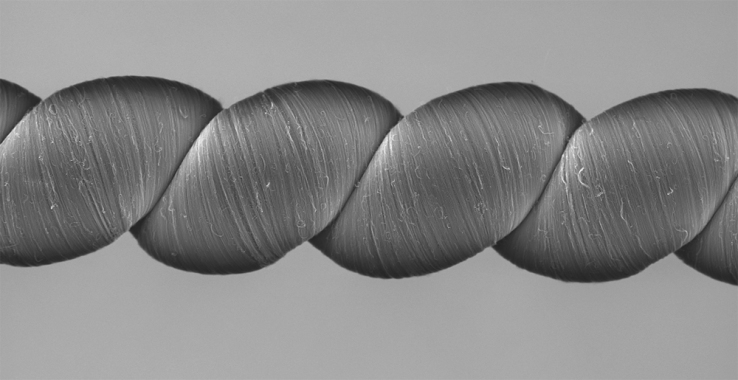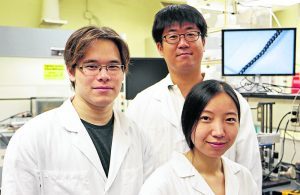
A remarkable “energy” fibre capable of generating electricity when stretched or twisted has been developed by US and South Korean energy researchers.
The international research team, led by scientists at The University of Texas (UoT) at Dallas and Hanyang University in South Korea, say there are multiple potential future applications for the nanotechnology-based “twistron”.
They have already demonstrated that twistron can be utilised for the harvesting energy from the motion of ocean waves or from temperature fluctuations.
In a proof-of-concept demonstration, Dr Shi Hyeong Kim, a postdoctoral researcher at the NanoTech Institute, UoT, waded into the frigid surf off the east coast of South Korea to deploy a coiled twistron in the sea.
He attached a 10cm-long yarn, weighing only 1 milligram (about the weight of a mosquito), between a balloon and a sinker that rested on the seabed.
Every time an ocean wave arrived, the balloon would rise, stretching the yarn up to 25%, thereby generating measured electricity.
When sewn into a shirt, these yarns have also served as a self-powered breathing monitor.
And in the lab, the researchers showed that a twistron yarn weighing less than a housefly could power a small LED, which lit up each time the yarn was stretched.
There is a lot of interest in using waste energy to power the Internet of Things, such as arrays of distributed sensors and it is thought this fibre technology might be exploited for such applications where changing batteries is impractical.
The team have also sewed twistron harvesters into a shirt. Normal breathing stretched the yarn and generated an electrical signal, demonstrating its potential as a self-powered respiration sensor.
Even though the researchers have so far used only very small amounts of twistron yarn in the current study, they have shown that harvester performance is scalable, both by increasing diameter and by operating many yarns in parallel.
Imagine if it became a serious contender in the harvesting of wave energy where many technologies have been developed but none have so far made the grade as commercial propositions.
“The easiest way to think of twistron harvesters is, you have a piece of yarn, you stretch it, and out comes electricity,” said Dr Carter Haines, associate research professor in the Alan G MacDiarmid NanoTech Institute at UT Dallas.
Twistron yarns are constructed from carbon nanotubes, which are hollow cylinders of carbon 10,000 times smaller in diameter than a human hair.
The researchers first twist-spun the nanotubes into high-strength, lightweight yarns.
To make the yarns highly elastic, they introduced so much twist that the yarns coiled like an over-twisted rubber band.
In order to generate electricity, the yarns must be either submerged in or coated with an ionically conducting material, or electrolyte, which can be as simple as a mixture of ordinary table salt and water.
Stretching the coiled twistron yarns 30 times a second generated 250 watts per kilogram of peak electrical power, during trials.
Although numerous alternative harvesters have been investigated for many decades, no other reported harvester has so far provided such high power outputs.
Twistron is said to be capable of generating over a hundred times higher electrical power per weight when stretched compared to other weavable harvester fibres so far developed.
“Fundamentally, these yarns are supercapacitors,” says Dr Na Li, a research scientist at the NanoTech Institute.
“In a normal capacitor, you use energy – like from a battery – to add charges to the capacitor. But in our case, when you insert the carbon nanotube yarn into an electrolyte bath, the yarns are charged by the electrolyte itself. No external battery, or voltage, is needed.
“When a harvester yarn is twisted or stretched, the volume of the carbon nanotube yarn decreases, bringing the electric charges on the yarn closer together and increasing their energy.
“This increases the voltage associated with the charge stored in the yarn, enabling the harvesting of electricity.”

